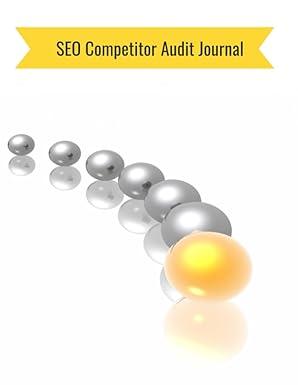Question
The production manager, Christina, of WidgetsCo Production has just been approached with an exciting new opportunity by the marketing manager of the company. The marketing
The production manager, Christina, of WidgetsCo Production has just been approached with an exciting new opportunity by the marketing manager of the company. The marketing manager has given Christina some information and has asked her to determine whether this is a feasible opportunity. If so, what should the sales and marketing targets be for the company?
The marketing manager and Christina have had their differences in the past when the company undertook ventures without consulting production. This caused remarkable problems, including one business venture in which the company lost significant amounts of money based on several flawed assumptions that were made by the sales department.
Marketing feels that demand will be elastic, with sales sensitive to the product price. As such, Christina received the following information from marketing:
| Annual Sales | Sale Price |
| 1500 | $120 |
| 1300 | $160 |
| 1000 | $200 |
Information on Costs
Based on the product design and details that Christina was given, she estimated that the company will have to increase its fixed costs by $164,000 to be able to produce up to 1300 units per year. To produce more than 1300 units, additional equipment and resources will be required, increasing the fixed costs to $180,000 per year.
Christinas initial analysis of the product came to the conclusion that the product will take $180 to produce. Based on this, it would appear that the only option available for the company would be to maximize the price to ensure that the price per unit is higher than the unit variable price.
Given the Fixed Cost required for the product of $164,000, at $180 to produce each unit, and a $200 sale price, the break even point for this venture currently lies at 8,200 units (in 8.2 years).
Christina studies the problem further and establishes that based on the characteristics of the product, production methods used, and quantities involved, a learning rate of 80% could be realized utilizing a batch size of 100 units.
Analysis
This case provides a study in tradeoffs that pit sales, product pricing, fixed and variable costs, and even learning rates against each other. Complete a Break Even (BE) analysis that compares the relationship between production levels and returns, and allows for scenarios to be run in which we can alter:
- Yearly production size (1,000 units / 1,300 units / 1,500 units)
- Price elasticity (Sale Price of $200 / $160 / $120)
- Fixed Costs ($164,000 / $180,000)
The BE analysis should help Christina determine if the company will make a profit at the various production/sales targets as provided in the table above.
- Build the model that spans the possible production rates for the following year.
- Christina needs to determine whether or not, and under what conditions, the product will generate a profit.
- Determine which combination of production/pricing will maximize profits.
- Should WidgetsCo pursue this venture?
- If Christinas estimated learning rate was incorrect and the company realized a learning rate of 70%, how much more profit could the company make if they produced 1000 units next year?
Step by Step Solution
There are 3 Steps involved in it
Step: 1

Get Instant Access to Expert-Tailored Solutions
See step-by-step solutions with expert insights and AI powered tools for academic success
Step: 2

Step: 3

Ace Your Homework with AI
Get the answers you need in no time with our AI-driven, step-by-step assistance
Get Started


